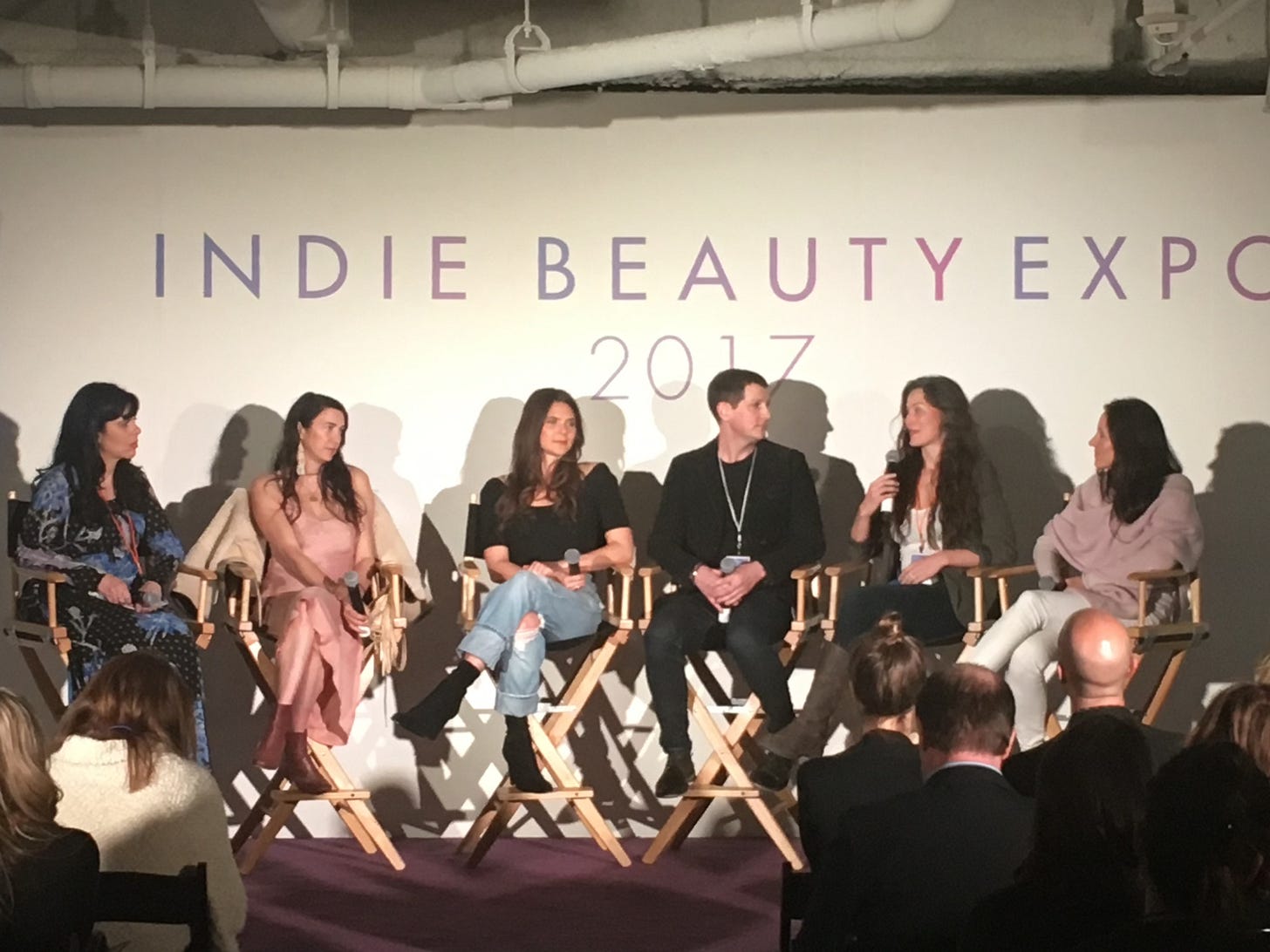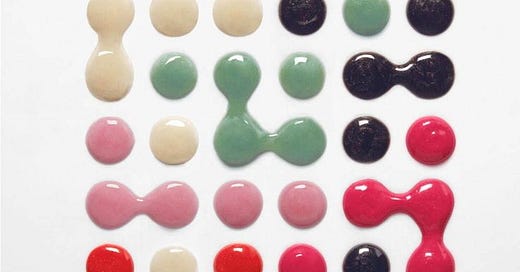In my line of work (brand development and go to market strategy), I have some version of the same conversation nearly everyday. Here’s the gist:
A client has a breakthrough, first-to-market product/ingredient/concept that fills an unmet need for an underserved audience.
They’re addressing a problem that no one else has solved.
They see an audience that no one is else is looking at.
They’ve identified a market gap that’s hiding in plain sight.
In some cases, their products aren’t novel, but their approach is.
They want to improve the status quo.
They want to change the way the game is played, or create a new playing field altogether.
They want to shake up an existing category or create an entirely new one.
Nearly every founder I’ve worked with believes they are bringing something new and necessary to market. My first job is to either validate or challenge this assumption. If I think there is a real opportunity for success, I take on the challenge, beginning with an investigative brand strategy rooted in an analysis of economic forces, market shifts, cultural thermals, consumer trends, competitive landscape and the brand’s right to win. It’s only after this process that I can confidently say whether the brand has a Unique Value Proposition (UVP), or whether they have identified White Space.
UVP vs. White Space
There are similarities between these two concepts, but they are not the same. A brand’s UVP communicates its unique value and benefits, and how it is different from and superior to its competitors. Every brand should have a clear UVP, and for beauty brands, it should be substantiated with clinical studies, consumer perception studies, testimonials, before and afters, and influencer endorsement.
The vast majority of brands enter the highly competitive beauty market and lean on their UVP. They are competing for the same customer with a different angle.
White Space is more elusive and rare, particularly in beauty. White Space is uncharted territory where underserved consumers are assumed to be. In this undiscovered land, anything is possible and nothing is proven. Out here on the fringes, there’s less competition, more innovation, and greater opportunity for long-term market disruption and growth. It also requires more risk, more work, and more time.
Newness isn’t White Space
Our culture rewards newness, not necessarily White Space.
We love new things, but we aren’t always so comfortable with new ideas.
We love new versions of our favorite things, but we aren’t always eager to try the first version of a thing.
We love new and improved things. But show us something truly novel, and our bias kicks in.
Most of us have a strong preference for things that are similar to what we already have, close to where we already are, and proven by what we already know.
A brand doesn’t need to claim White Space to succeed. Most of us want what we already love, with a new spin.
Just look at the smashing success of a brand like *Merit. There is nothing novel about the no-makeup-makeup aesthetic. The brand competes and wins on brand, quality, performance, and customer experience, but not necessarily innovation. They’re grabbing existing market share, not creating a new market. They’ve raised the bar for their competition, but they haven’t fundamentally changed the game.
Few brands reach the level of success that Merit has achieved. Helmed by a brilliant leader who understands the power of brand, Merit delivers a superior version of what we already love.
Bush Whackers and Breadcrumbs
Being the first to claim White Space does not guarantee success. In fact, it comes with greater risk. Of the many brands I’ve helped develop over the years, only a few have ventured into unchartered market or consumer territory. They broke the mold, defined categories, set standards, introduced novelty, brought taboo topics into the mainstream, exposed industry blindspots, and improved broken systems. Yet the first ones to innovate are not always the first to achieve commercial success. The ones that benefit the most often come behind the guy who bush whacked the trail.
But of course, there are many shining examples of first-to-market innovators who have identified market gaps, addressed unmet consumer needs, and unlocked new opportunities for growth and expansion. These are the brands that have changed the game as we know it. And while there’s no roadmap (that’s the point!), these brands have left breadcrumbs.
#1. New Product, Familiar Parts
When introducing anything new, a universal secret to success is to soft-serve it with something familiar. It’s our primal instinct to look for something safe when encountering something new.
Just look at the most innovative companies of the last century who combined common entities to create breakthrough products and services.
Phone + Computer = iPhone
Car + Battery = Tesla
Blockbuster + Internet = Netflix
Perhaps the best example of a company that balances the comfort of the familiar (home) with the excitement of something new (travel) is AirBnB.
A fun example of this in the beauty industry is FACE GYM = workouts + facials + skincare.
#2. Customized Product, Enabled by Tech
Some brands are conquering White Space by shaking up an existing category with technological innovation.
Prose has revolutionized the haircare category with an AI-powered, made-to-order model that offers personalized formulas at scale, and on demand.
Kiki World is the first to enable product co-creation and a dynamic loyalty program using blockchain technology.
While AI and blockchain technology are the engines of innovation for these brands, the customer is in the driver’s seat. They have choice and control, and they are the ones guiding customization.
#3. Same Product, Different Path
Another path to White Space is to reposition the product for a new category.
My two favorite examples are Moon Juice and Jolie, brands that positioned adaptogens and shower filters as beauty products, respectively. We may take this for granted today, but I remember the 2017 Indie Beauty Expo when Amanda Chantal Bacon sat on a panel with Jeannie Jarnot, May Lindstrom, Shiva Rose, Josh Rosebrook and Tanja Gruber, and said with an air of bewilderment that she was surprised to be sitting there. Her aim was to wake people up to their optimal health and vitality with the power of plant medicine; she never saw Moon Juice as a beauty brand. She was one of the first to pioneer what we now know as the ‘beauty and wellness’ category.

#4. Better Product, Powered by Biotech
Some of the greatest breakthroughs in beauty today are coming out of biotech companies that introduce novel, environmentally-friendly ingredients by reimagining centuries-old bio-fermentation techniques. Biotech offers sustainable and ethical alternatives to ingredient sourcing as it reduces reliance on land and water, and prevents over-harvesting.
Ayuna is my favorite example of a luxury skincare brand who has pioneered the use of sustainable ingredients and materials, including many bio-engineered actives that deliver a truly unique experience and unsurpassed results. (I’m DYING over Velo X). They are one of the few cosmetic brands with the Butterfly Mark, the excellence certification award by Positive Luxury.
Deinde is another breakthrough brand born out of the biotech company, Debut. Their novel ingredient, Naringenin, is a synthetic molecule biologically identical to a polyphenol found in citrus peels. Without disrupting nature, they’ve harnessed the power and potency of this antioxidant to reduce inflammaging.
While biotech-based beauty brands may be competing against conventional brands for the same customer, their approach to ingredient “sourcing” and its positive impact on the planet is novel and necessary.
#5. Favorite Products, Different Customer Journey
213 Deli broke the mold with a more direct to consumer commerce experience: weekly text-based product drops of cult-favorite (or cult-worthy) beauty finds. They accompany their launches with editorial content guest-written by the best in the biz.
Thirteen Lune launched in 2020 to provide dedicated shelf space to Black and Brown-founded brands, and to create a more inclusive beauty industry. Their 90/10 rule promises a product assortment that is 90% BIPOC-founded brands, 10% ally brands - a complete 180° from mainstream beauty retail.
While Birchbox ushered in the era of subscription beauty boxes, Beauty Heroes reimagined the model to be a more sustainable, immersive experience, inviting true discovery of the healthiest brands in the world. Their monthly Discovery introduces subscribers to 2-3 full sized products that meet the highest ingredient standards in the industry.
White Space and Table Stakes
Once White Space is claimed and new territory is established, what was high stakes becomes table stakes. What was new becomes normcore. What was fresh becomes familiar. And the search for White Space continues.
Fortunately, our status quo bias is balanced with an innate curiosity for the unknown. The human spirit thrives on both the comfort of familiarity and the thrill of discovery. Brands that embrace this duality will drive culture forward.
*This brand reference has been changed from the original post published on May 20th. I originally referenced Westman Atelier, but after thinking about it more, I do believe that Westman Atelier is an innovator brand. Founded by Gucci Westman, it could be argued that she originated the no-makeup-makeup aesthetic in the late 90’s, and she was certainly one of the firsts to bring the “clean” philosophy to luxury makeup with Westman Atelier.





Wonderful insights here, Rachel. Thank you for sharing. Gears are turning haha